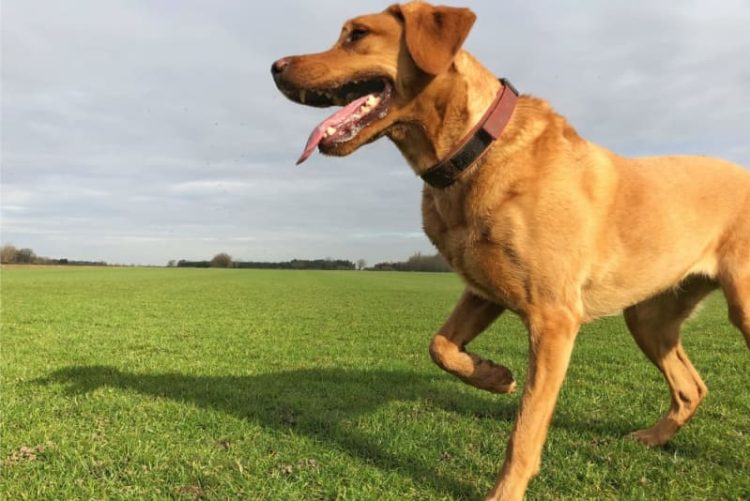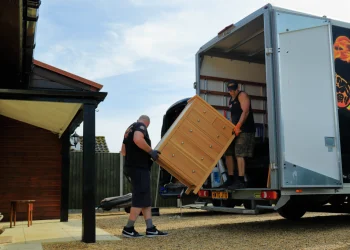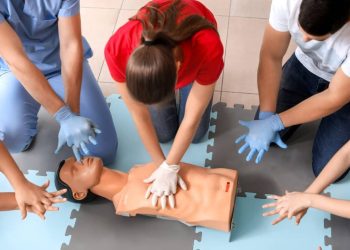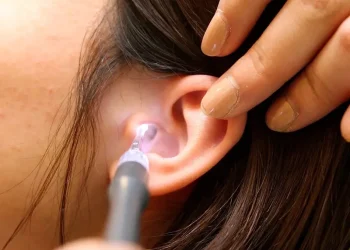Cranial cruciate ligament damage in dogs is one of the most prevalent orthopaedic problems that veterinarians see. This ailment, comparable to an ACL rupture in humans, can severely limit a dog’s movement and quality of life. Understanding the nature of cranial cruciate ligament injuries in dogs, including causes, symptoms, and treatment options, is critical for both pet owners and veterinary experts.
In dogs, the cranial cruciate ligament performs an important function in stabilising the knee joint, often known as the stifle. This ligament controls the tibia’s internal rotation and prevents it from slipping forward relative to the femur. When a dog’s cranial cruciate ligament is broken or ruptured, the joint becomes unstable, producing discomfort, lameness, and potentially long-term degenerative changes in the knee.
Cranial cruciate ligament injuries in dogs can develop owing to a variety of causes. While acute trauma, such as a rapid twist of the knee, can cause ligament tears, the majority of occurrences in dogs are due to progressive ligament deterioration over time. Age, breed propensity, obesity, and conformational anomalies can all play a role in this deterioration. Certain breeds, such as Labrador Retrievers, Rottweilers, and Newfoundlands, appear to be more likely to have cranial cruciate ligament problems.
Recognising the signs of damage to the cranial cruciate ligament in dogs is critical for timely management. Common symptoms include limping or lameness in one of the hind legs, difficulty rising from a seated posture, aversion to jumping or climbing stairs, and a marked reduction in activity level. In certain situations, dogs may demonstrate “toe-touching” lameness, in which they put little weight on the afflicted limb. It is crucial to remember that cranial cruciate ligament injuries in dogs can range from partial rips to total ruptures, and the severity of symptoms may differ appropriately.
A dog’s cranial cruciate ligament damage is normally diagnosed using a mix of physical examination and imaging tools. Veterinarians will analyse the dog’s gait, do a complete physical examination of the afflicted limb, and may administer specialised tests such as the cranial drawer test or the tibial compression test to determine the stability of the knee. X-rays are frequently performed to rule out other possible reasons of lameness and to determine the extent of arthritis in the joint. In some circumstances, more sophisticated imaging methods like as MRI or arthroscopy may be used to provide a more thorough study of the joint structures.
When a dog’s cranial cruciate ligament damage is identified, treatment options include both conservative therapy and surgical surgery. The choice of therapy is determined by a number of criteria, including the dog’s size and activity level, the severity of the injury, the presence of any concurrent health conditions, and the owner’s financial situation.
Conservative treatment for cranial cruciate ligament injuries in dogs usually consists of rest, weight control, physical rehabilitation, and pain management. This method may be appropriate for smaller dogs, elderly canines, or those with partial ligament tears. Rest and restricted activity allow the body to build scar tissue around the joint, which may provide some stability. Weight control is critical because extra weight adds stress to an already damaged joint. Physical therapy, which includes regulated workouts and hydrotherapy, can assist to preserve muscle mass and enhance joint function. NSAIDs and other analgesics are frequently used to make the dog comfortable during the healing process.
While conservative care may be beneficial in certain situations, surgical surgery is frequently advised for cranial cruciate ligament injuries in dogs, particularly in bigger, more active dogs or those with full ligament ruptures. Several surgical procedures have been developed to treat cranial cruciate ligament injuries in dogs, each having merits and disadvantages.
The tibial plateau levelling osteotomy (TPLO) is one of the most often used surgical procedures for canine cranial cruciate ligament injury. This technique includes cutting and twisting the tibial plateau to alter the biomechanics of the knee joint, hence reducing the necessity for the cranial cruciate ligament. The TPLO has had great long-term outcomes in several dog breeds, particularly bigger and more energetic ones.
Tibial tuberosity advancement (TTA) is another surgical option for canine cranial cruciate ligament injury. This treatment entails cutting and advancing the tibial tuberosity, which alters the angle of the patellar tendon relative to the tibia plateau. The TTA, like the TPLO, seeks to modify the biomechanics of the knee in order to restore stability without relying on the injured cranial cruciate ligament.
Extracapsular repair procedures, commonly known as lateral suture stabilisation, are another option for treating cranial cruciate ligament injuries in dogs. This technique includes inserting a strong suture material outside the joint capsule to replicate the function of the cranial cruciate ligament. While this treatment may be appropriate for tiny dogs or those with minor rips, it has a greater failure probability in larger, more active dogs than osteotomy techniques such as TPLO or TTA.
Regardless of the surgical procedure used, post-operative care and rehabilitation are critical to the success of cranial cruciate ligament therapy in dogs. The recovery phase usually consists of limited activity for many weeks, followed by a gradual restoration to normal function. Physical therapy is essential in the rehabilitation process, as it helps to develop muscle strength, enhance joint range of motion, and restore normal gait patterns.
In recent years, there has been an increasing interest in regenerative medicine techniques to treating cranial cruciate ligament injuries in dogs. Stem cell therapy and platelet-rich plasma (PRP) injections are being studied as possible therapies to improve healing and decrease inflammation in the afflicted joint. While these treatments appear promising, additional study is needed to completely understand their effectiveness in treating cranial cruciate ligament injuries in dogs.
Prevention of cranial cruciate ligament injuries in dogs is difficult due to the condition’s complex nature. Maintaining a healthy weight, getting regular exercise to keep muscles strong, and avoiding high-impact activities on slippery surfaces can all help lower the risk. Some veterinarians also offer joint supplements including glucosamine and chondroitin to improve general joint health, albeit their benefit in reducing cranial cruciate ligament injuries has not been demonstrated.
It is important to note that dogs that have had a cranial cruciate ligament damage in one knee are more likely to get a similar injury in the other. This is due in part to changed biomechanics and higher stress on the unaffected limb during recovery. Pet owners should keep an eye out for indications of lameness or pain in the contralateral limb and seek veterinarian care as soon as possible if they become concerned.











